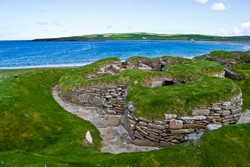Farming in Neolithic Europe
Studying cultural evolution has led to enhanced knowledge and understanding of human cultural and socioeconomic behaviour. Though a great amount of theoretical development has taken place, little has been done to integrate the different subfields of cultural evolutionary theory and methods and apply them to historical case studies. Doing so, we can address questions regarding the links between demographic, economic, social and cultural patterns and processes. That is precisely what EUROEVOL(opens in new window) (Cultural evolution of Neolithic Europe), an EU-funded project, aimed to do. In order to explain the patterns of stability and change encountered by the spread and establishment of farming in Neolithic Europe, EUROEVOL created a spatial database. It contains radiocarbon dates from archaeological sites as well as data on animal bones, plant remains and pottery. It also accounts for the occurrence of mining, the building of monumental sites, and incidences of violence that occurred during 8000-4000 BCE in western and central Europe. Thus, large-scale comparisons over space and time were possible. Qualitative methods were used to test the hypothesis that farming led to regional population growth. The study investigated whether the population patterns were affected by climate change. It also examined the ways that cultural features are spread across space and time and the aspects that influence this. Results show that the introduction of farming to Europe did not lead to steady improvements in living conditions, but rather was a boom and bust in many regions. It was likely that internal factors rather than climate change led to exceeding the limits of their socioeconomic systems. Correlations were found between changing subsistence economy and population patterns. Such application of qualitative methods in archaeology is being applied in other studies on human population history. Dissemination of results has taken place at conferences and workshops and via several publications in journal articles and book chapters as well as on the project website.







